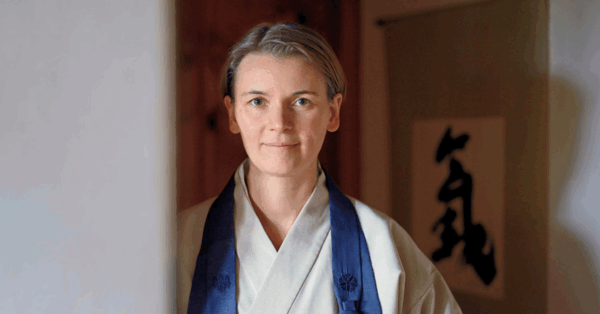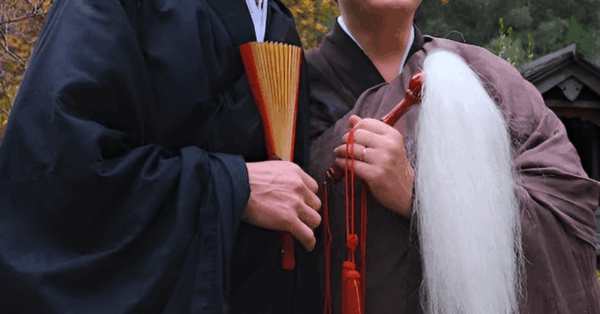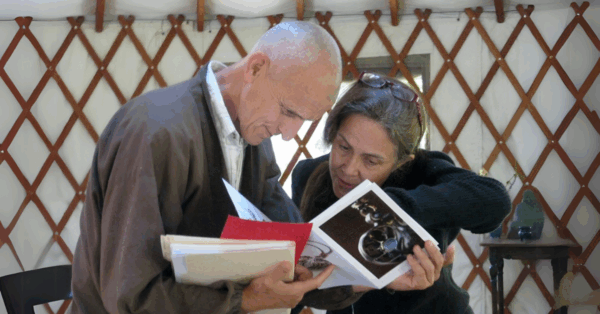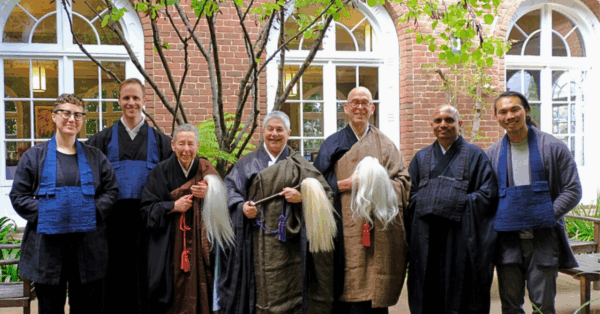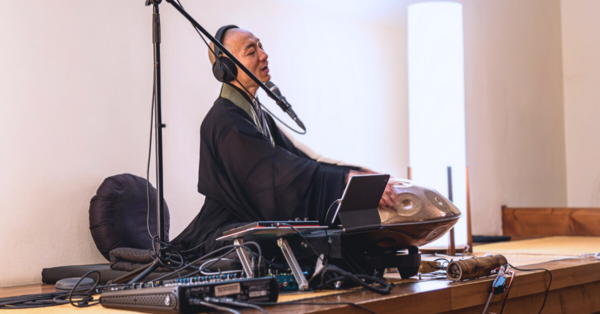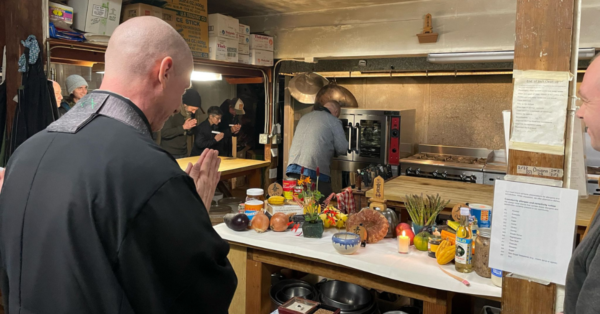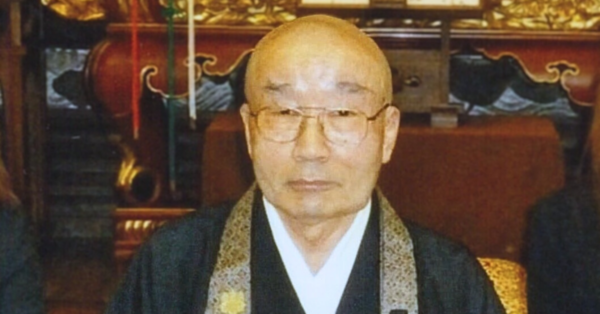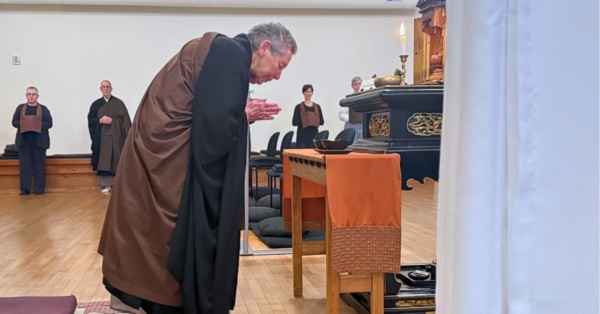by Mary Morgan, Chair of Board of Directors
At its meeting in October, the Board will decide whether to amend the bylaws of San Francisco Zen Center to provide for a new abbatial structure consisting of a Central Abbess/Abbot and an Abiding Abbess/Abbot at City Center and at Green Gulch Farm, instead of the co-abbess/abbot structure we currently have. The specific wording of the bylaw change is set forth in the Final Report of the Joint Committee. We invite you to examine carefully the Report and recommended bylaw change.
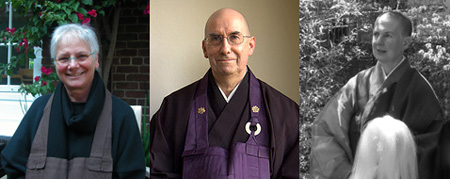
Kiku Christina Lehnherr, Myogen Steve Stücky, Eijun Linda Cutts
It has already been distributed to the current leadership and residents of Zen Center. For the history and documents regarding the bylaw change, please refer to our web page Abbatial Restructuring Trial – Final Report under Governance. We invite your feedback, questions and comments about the proposed bylaw change. Please email them to our Corporate Secretary at secretary@sfzc.org.
For the past four years the Board and the Elders Council, separately and together, have been examining issues relating to the structure of San Francisco Zen Center abbatial leadership. The Board has been concerned about overlapping authority between the two Co-Abbots and the lack of clarity of decision-making authority between the Co-Abbots and the President. These combined to make decision-making at Zen Center cumbersome and unnecessarily slow. The Co-Abbots and the Elders Council have for several years been concerned about the Co-Abbots’ increasingly unmanageable workload, making them less accessible to students.
In June 2009 the Board approved the establishment of a joint committee of the Board and the Elders Council to work together on proposals for abbatial restructuring. The committee consisted of three representatives of the Elders Council (Gil Fronsdal, Leslie James, and Linda Ruth Cutts), three members from the Board (Mary Morgan, Norma Fogelberg, and Jordan Thorn), the Co-Abbots (Steve Stücky and Paul Haller), chair of the Board (Ed Sattizahn), and the President and Vice President (Robert Thomas and Susan O’Connell). The Joint Committee was charged with discussing how, if at all, to restructure abbatial leadership and then to submit a proposal for Board consideration and action.
In April 2010 the Board approved a restructured abbatial leadership consisting of a Central Abbess/Abbot and an Abiding Abbess/Abbot at City Center and at Green Gulch Farm. Steve Stücky has been the Central Abbot. Paul Haller was the Abiding Abbot at City Center until he stepped down in February 2012 and Christina Lehnherr became the Abiding Abbess at City Center. Linda Ruth Cutts has been the Abiding Abbess at Green Gulch Farm.
It was agreed that this new structure would be in place for a trial period only. No decision about whether to change the structure in the bylaws would be made until there was adequate time for everyone to see how it worked on a day-to-day basis. The trial period has gone on for about two years. The Abbesses/Abbots, Board, Elders Council, Officers, Directors, and Tantos during the trial period, as well as residents at each practice center, were all consulted as to whether the trial restructured leadership was addressing the identified problems of unmanageable workload, insufficient time for students, and inefficient and untimely decision-making. The consensus has been that the new structure is addressing these issues and is well-serving Zen Center as a whole.
In July 2012 the Board approved the general concept of amending the bylaws to reflect the restructured abbatial leadership which has been in place and working well for the last two years. The Joint Committee has now drafted specific wording for the bylaw change. The Board will consider this specific wording at its October meeting.
The Joint Committee is recommending a change in the bylaws that would allow up to three Abbesses/Abbots. The abbatial leadership shall normally consist of a Central Abbess/Abbot, an Abiding Abbess/Abbot at City Center, and an Abiding Abbess/Abbot at Green Gulch Farm. The phrase “normally” is used to allow maximum flexibility. Various considerations, such as the lack of an appropriate candidate, change in workload or organizational needs, or financial issues, might cause the Elders Council to recommend and/or the Board to appoint less than three Abbesses/Abbots in a particular year or not fill a vacancy because of unusual circumstances. It is the intent of the Joint Committee and the understanding of the Elders Council that absent unusual circumstances there will be a Central Abbess/Abbot and an Abiding Abbess/Abbot at City Center and at Green Gulch Farm.
It is the intent of the Joint Committee that the religious leadership of Zen Center be shared by the Abbesses/Abbots. The responsibilities of this shared leadership are set forth in Section 3 of Article VI, to which no change is recommended. The Central Abbess/Abbot will carry out these responsibilities primarily on an organization-wide basis; and the Abiding Abbesses/Abbots will carry out these responsibilities primarily at their respective temples.
The recommended change would allow an Abbess/Abbot to serve an initial term of four years with two possible extensions of three years each, for a total of ten years. It is anticipated that the Elders Council would usually, but not necessarily, recommend an Abiding Abbess/Abbot to serve in the subsequent position of Central Abbot or in the other position of Abiding Abbess/Abbot. If so, that person could serve up to a total of ten years in each position. The longer term is recommended to allow stability and continuity in the abbatial leadership and because it takes a considerable period of time for a new person to settle into the role. Allowing an Abiding Abbess/Abbot to move into the position of Central Abbot or the other position of Abiding Abbess/Abbot without a hiatus of time reflects our belief that someone who has first served as Abiding Abbess/Abbot at one temple would normally be most appropriate and qualified to serve as Central Abbot or as Abiding Abbess/Abbot at the other temple. However, a current Abiding Abbess/Abbot who has served 10 years at one temple may not be appointed for another term at the same temple without a hiatus of at least 3 years.
The current procedure for appointing Abbesses/Abbots is not changed. The Elders Council makes a recommendation, and the Board appoints. The Board has the final decision-making authority about whom, if anyone, is appointed or reappointed to a particular position. Such appointment power is exercised only upon a recommendation from the Elders Council.
There would be no change with regard to membership of the Abbesses/Abbots on the Board. All three would be voting members.
There would be no change to the spiritual leadership responsibilities of the Abbesses/Abbots, to the Abbesses/Abbots’ Council, or to the Abbesses/Abbots’ Group.


